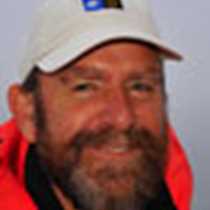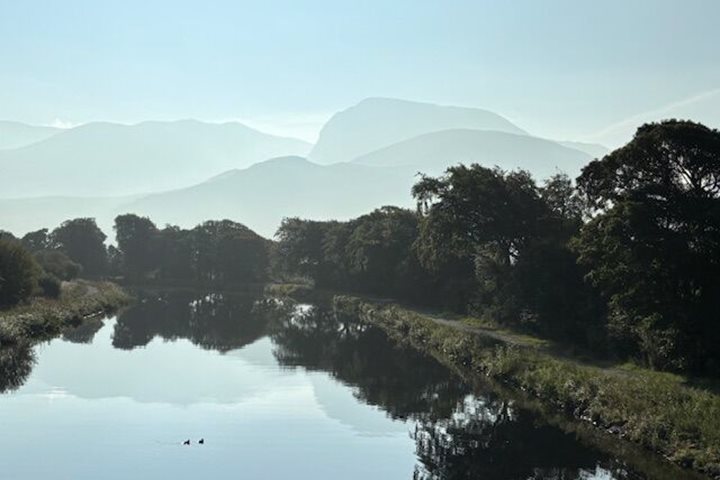It poured last night, as only the west coast of Scotland can pour. The gutters were full, the canal was full, even Loch Linnhe was full of water. But when we came on deck, it was dry! And to pile miracle on miracle, the top of Britain’s highest mountain, Ben Nevis, was clear. We could see all 4,406 feet of it, plus the dreaded North Face, still with patches of snow clinging to the crags. But we had our own mountain to climb: the towering Neptune’s Staircase, eight locks, nine sets of lock gates, rising from the saltwater loch at Corpach to a magnificent 64 feet above sea-level, from where we could gaze down on lesser mortals in the slums of Fort William. The Gaelic name for this town is An Gearasdan: the Garrison, a reminder of the military repression that followed the 1745 Jacobite uprising; William was the Duke of Cumberland, the king’s son, who rampaged through the glens after Culloden, slaughtering any Highlanders still fleeing their defeat in the north.
Luckily for us, all was peace and quiet on the canal, and to our delight, by the time we reached Gairlochy, the entrance to the first of our four lochs, we were bathed in sunshine. Geese grazed the grass pastures, swallows flitted round the loch gates, and fascinated walkers paused to watch our stately rise inside the lock until we could sail out into Loch Lochy. Now the vista opened from the narrow waterway of the canal to a wide mountain panorama of lofty peaks and shoreline woodland. We gazed up along the length of the Great Glen, the 60-mile-long fault created when Scotland, a former island off the coast of the American continent, collided with the ancient land of Baltica. Now welded permanently to the rest of Britain, it is a reminder of Scotland’s geological origins far from these shores. Stewart recounted this vividly in his talk “The Orogeny of Scotland,” explaining the more dramatic geological features of Scotland and the Scotsmen who unravelled its mysteries.
Another short section of canal brought us swiftly to the highest loch, Loch Oich, 106 feet above sea level which drains now to the northeast, downhill to Inverness. As we traversed it, Ian talked about the Scottish woodlands, how they colonised the barren post-glacial landscape 15,000 years ago, and how the depredations of animals, men and latterly, hordes of sheep, denuded the hills we see today. One either side of the loch, native oak, birch and hazel is re-clothing the lower slopes, and he told us how an intrepid army of volunteers is restoring the splendour of the original Caledonian pine forest.
From here we will descend steadily to Inverness. A halt at Kytra Loch allowed different factions of the fit and feisty to walk, cycle or kayak the two miles to Fort Augustus, our destination for the night. A beautiful canal-side walk took us beneath huge oak, ash, larch and Scots pine trees, the canal bank a palette of purple knapweed, yellow goldenrod and blue harebell flowers. Lucky kayakers quickly caught us up, coasting on a stiffening tail wind from the southwest.
Once back on our moored mothership, we looked aft to where a spectacular bruised indigo sky was bearing down on us: just on board before a downpour engulfed us. Safe inside, a day of bright images whirling inside our heads, and nothing left to struggle with but a three-course dinner in the comfort of Lord of the Glens.







